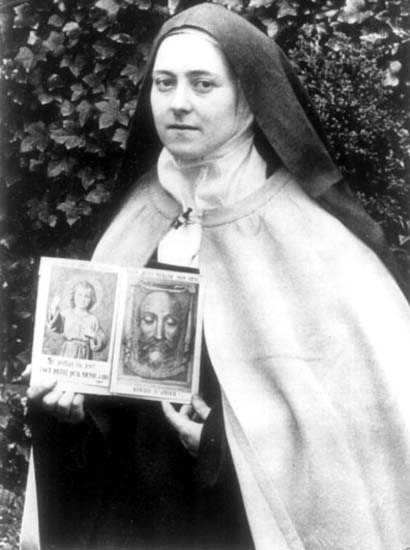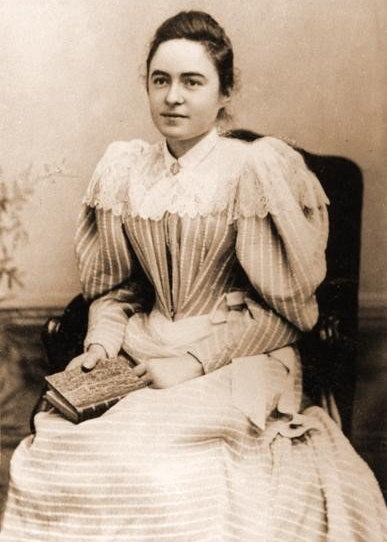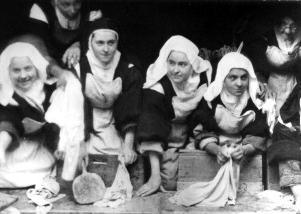By Plinio Corrêa de Oliveira *
There is a valuable deposition from the canonization of Saint Thérèse of the Child Jesus, given by her sister Céline. It reveals aspects of the saint’s life about which few are aware and to which, even less give due importance.
The information contained in this document is ironclad. Not only was Céline closer to Saint Thérèse than anyone else, but she gave this testimony in an official Church inquiry. Thus, it is scrupulously accurate. A part of this document states:
“The servant of God followed a path of simple confidence and total abandonment to God. She named this her little way of spiritual infancy. She continually corresponded to grace and performed generous acts. This is how she formed herself and her novices.”
This shows the role that correspondence to grace plays in the little way. Most people are very familiar with the sweetness of Saint Thérèse’s spirituality, but neglect the roles of correspondence and suffering.
However, doing so denies almost every page of Saint Thérèse’s writings. In fact, she prized suffering so much that it became an integral part of who she was. Céline shows how this sweetness and suffering coexisted in the life of Saint Thérèse.
She says that Saint Thérèse always corresponded to grace. This correspondence is an act of the will. It consists in accepting the invitation to grace. This requires sacrifice, because frequently it forces one to behave contrary to his desires. Though Saint Thérèse was not the saint of great sacrifices, she constantly accepted little, simple and unpretentious ones.
Since these were unceasing, they weighed more heavily on her than great sufferings would have. At least these would have come in waves with periods of respite in between. Saint Thérèse’s life of constant sacrifice demonstrates the great-little suffering of her way.
Céline continues:
˝One day, I read a passage on the Eucharist that said Our Lord’s mercy will be granted to each according to the merit of his works. I asked the servant of God why mercy would be given according to the merit of one’s works. She was emphatic and immediately responded that confidence in God is nourished on sacrifice.”
Pay close attention to her response. Saint Thérèse sustained herself on sacrifice.
˝She went on to say that each should give himself entirely and constantly renounce himself. In a single word, he should prove his love in every way and always do every good work that he can. This is the desire of little souls who run along the way of spiritual infancy. She finished: “I intentionally said that these souls run, because they never lag behind.”
Thus, the spirit of sacrifice is key to the little way. It means constantly offering little sufferings, and at times big ones, in a spirit of spiritual infancy, abandonment and confidence in God.
Saint Thérèse exemplified this spirit. She resolved always to ask for nothing and accept everything. Once, a nun was helping her arrange her habit and inadvertently stuck a pin through her flesh. Faithful to this spirit, Saint Thérèse never complained and left the pin where it was until she retired for the evening.

St. Thérèse’s crown of roses. On the day of her profession, the prioress placed a crown of roses upon the young sister’s head. “I want no other Crown by You, my Beloved.”
So, the relationship between the little way and suffering is clear. Nevertheless, there is still something mysterious about it, because Saint Thérèse’s life and writings, which are filled with affliction, are also imbued with a perfume of roses.
When one reads the Spiritual Exercises of the great Saint Ignatius, who I hold in highest esteem, it makes one’s hair stand on end. However, when Saint Thérèse writes the same thing, somehow it comes with a smile.

Just before the Beatification of St. Thérèse, on March 26, 1923, the exhumation of her relics and their return to her Carmel took place. a brand new hearse, draped in white, transport the relics of St. Thérèse from the cemetery, through town and to her place of rest at Carmel. It was pulled by four white horses with trappings and plumes of the same color and accompanied by horsemen in brightly colored uniforms. 50,000 persons were estimated to have attended the procession.
* The following text is taken from an informal lecture Professor Plinio Corrêa de Oliveira gave on July 16, 1970. It has been translated and adapted for publication without his revision. –Ed. American TFP.













